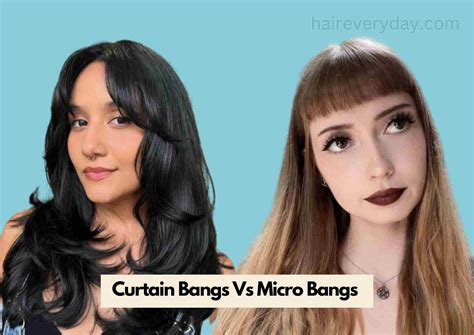Introduction
Bangs, the fringe of hair that falls over the forehead, have been a popular hair trend for centuries. From the iconic Cleopatra to the modern-day style icons, bangs have the power to transform a look, frame the face, and enhance facial features. However, the decision of whether or not to get bangs is not a simple one. There are numerous factors to consider, including face shape, hair texture, and personal style. This comprehensive guide will delve into the pros and cons of bangs vs. no bangs, providing you with the information you need to make an informed decision.

Pros:
- Face Framing: Bangs can instantly frame the face, drawing attention to the eyes and cheekbones. They can create the illusion of a more balanced and symmetrical appearance.
- Covering Imperfections: Bangs can help to conceal imperfections such as a high forehead, wrinkles, or acne scars, making them an excellent option for those who want to minimize these concerns.
- Adding Volume: Bangs can add volume and movement to hair, creating the illusion of fuller and thicker locks.
- Style Versatility: Bangs offer numerous styling options, from classic curtain bangs to edgy razor bangs. This versatility allows you to switch up your look frequently.
Cons:
- Maintenance: Bangs require regular maintenance, including trimming and styling. Overgrown or untidy bangs can detract from your overall appearance.
- Not Suitable for All Face Shapes: Bangs may not be suitable for all face shapes. For example, they can emphasize a wide forehead or round face.
- Hair Damage: Constant styling and brushing can damage the hair near the bangs, leading to breakage or split ends.
- Time-Consuming: Styling bangs can be time-consuming, especially if you want a flawless finish.
Pros:
- Low Maintenance: Hair without bangs is generally easier to maintain. You don’t have to worry about trimming or styling them, saving you time and effort.
- Versatility: Hair without bangs offers greater versatility in styling. You can experiment with different partings, ponytails, and braids without creating any awkward transitions.
- Less Damage: Without bangs, there is less stress on the hair near the forehead, reducing the risk of damage or breakage.
- Suitable for All Face Shapes: Hair without bangs generally suits all face shapes, as it doesn’t draw attention to any particular area.
Cons:
- Lack of Dimension: Hair without bangs can sometimes appear flat or lacking dimension.
- Emphasizing Facial Features: Hair without bangs can draw attention to facial features that you may not want to highlight, such as a high forehead or large nose.
- Less Coverage: Hair without bangs provides less coverage for imperfections, which can be a drawback for those who want to minimize these concerns.
- Less Dramatic: Hair without bangs may be less dramatic or striking than hair with bangs.
The decision of whether or not to get bangs depends on a number of factors, including:
- Face Shape: Bangs can complement certain face shapes, such as oval and diamond shapes, while they may not be as suitable for round or square faces.
- Hair Texture: Bangs work best on straight or wavy hair. Curly or coily hair may require more effort to style and may not hold a bang shape well.
- Personal Style: Ultimately, the decision of whether or not to get bangs should align with your personal style and preferences.
- Getting Bangs Too Short: Overly short bangs can be difficult to grow out and may not suit all face shapes.
- Ignoring Hair Texture: Trying to replicate a bang style that doesn’t suit your hair texture can lead to disappointment.
- Not Consulting a Hair Stylist: It’s always advisable to consult with a professional hair stylist before getting bangs to ensure they complement your face shape and hair type.
- Over-Styling: Excessive styling with heat tools can damage the hair near the bangs, especially if they are fragile or fine.
-
How often should I trim my bangs?
– Bangs typically require trimming every 2-3 weeks to maintain their shape. -
Can I wear bangs with a round face?
– Yes, there are certain types of bangs that can complement a round face, such as side-swept bangs or long, wispy bangs. -
How do I style bangs without heat?
– Use rollers or Velcro strips to set your bangs in place. You can also braid your bangs overnight to create soft waves. -
Will bangs damage my hair?
– Bangs can damage the hair near the forehead if they are constantly styled with heat tools or over-brushed. -
Can I have bangs with curly hair?
– Yes, but curly bangs may require more effort to style and may not hold a bang shape as well as straight or wavy hair. -
How can I prevent my bangs from looking greasy?
– Wash your hair more frequently, especially near the bangs. You can also use dry shampoo to absorb excess oil.
Whether you choose bangs or no bangs, the key is to select an option that complements your face shape, hair texture, and personal style. By considering the pros, cons, and common mistakes, you can make an informed decision that will enhance your overall look. Remember, hair is versatile and adaptable, so don’t be afraid to experiment with different styles to determine what works best for you.
